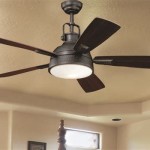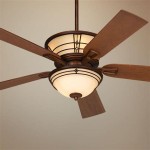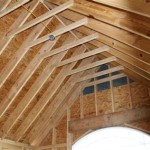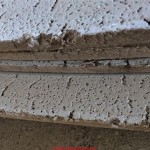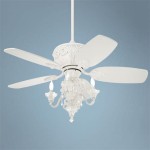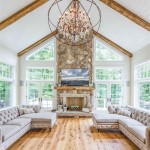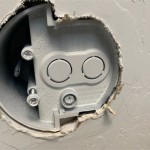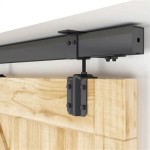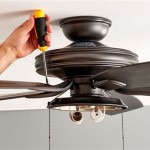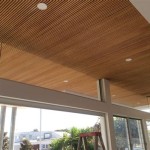Types of Roof Ceilings: A Comprehensive Overview
The roof ceiling, often referred to simply as the ceiling, forms the topmost interior surface of a room and plays a crucial role in both aesthetics and functionality. It serves as a barrier between the interior space and the roof structure, influencing factors such as insulation, acoustics, and the overall visual appeal of a building. Understanding the different types of roof ceilings available is essential for architects, builders, and homeowners alike, enabling informed decisions based on specific needs and preferences.
The selection of a particular ceiling type involves considering various parameters, including budget, design intent, structural requirements, and desired performance characteristics. Each type offers distinct advantages and disadvantages, making it imperative to evaluate these factors within the context of the overall building project. This article provides a detailed exploration of various roof ceiling types, highlighting their features, applications, and considerations for implementation.
Suspended Ceilings
Suspended ceilings, also known as drop ceilings or false ceilings, are installed below the structural ceiling, creating a void that can accommodate wiring, ductwork, and other essential building services. They are typically composed of a grid of metal channels suspended from the roof structure and filled with lightweight panels made of materials such as mineral fiber, fiberglass, or gypsum. This type of ceiling has gained widespread popularity in commercial and residential spaces due to its adaptability and ease of installation.
One of the significant benefits of suspended ceilings is their accessibility. The panels can be easily removed and replaced, simplifying maintenance and repairs of utilities hidden above. This feature is particularly valuable in commercial buildings where frequent upgrades and modifications to electrical or HVAC systems are common. Furthermore, suspended ceilings offer improved acoustics by absorbing sound waves, reducing noise levels within the space.
Aesthetic versatility is another key advantage of suspended ceilings. The panels are available in a wide range of textures, colors, and patterns, allowing for customization to match the overall design scheme of the room. Additionally, lighting fixtures, such as recessed lights and track lighting, can be readily integrated into the ceiling grid, providing flexible and efficient illumination solutions.
However, suspended ceilings also have certain limitations. They can reduce the overall ceiling height of a room, which may be a concern in spaces with already low ceilings. The materials used in the panels are typically not as durable as those used in other ceiling types and may be susceptible to damage from moisture or impact. Moreover, the exposed grid system may not be aesthetically pleasing to everyone, potentially requiring further concealment through decorative elements.
Drywall Ceilings
Drywall ceilings, also known as gypsum board ceilings, are constructed using large sheets of gypsum board attached directly to the ceiling joists or framing. The seams between the sheets are then taped and finished with joint compound to create a smooth, seamless surface. Drywall ceilings are a common and cost-effective option for residential and commercial construction, offering a durable and versatile substrate for paint or other finishes.
A primary advantage of drywall ceilings is their affordability. Gypsum board is a relatively inexpensive material, and the installation process is straightforward, resulting in lower labor costs compared to more complex ceiling systems. Drywall also provides a good level of fire resistance, helping to slow the spread of flames in the event of a fire.
The smooth, continuous surface of a drywall ceiling provides a clean and modern aesthetic that can be easily customized with paint, texture, or other decorative treatments. It also serves as an excellent base for applying wallpaper or other wall coverings. Furthermore, drywall can be easily shaped and molded to create curved or vaulted ceilings, adding architectural interest to a space.
However, drywall ceilings are not as easily accessible as suspended ceilings for maintenance and repairs of utilities. Access requires cutting into the drywall, which can be time-consuming and disruptive. Drywall is also susceptible to damage from water, requiring careful attention to moisture control. Cracking is also a common issue, particularly in areas subject to expansion and contraction due to temperature or humidity changes.
Plaster Ceilings
Plaster ceilings are constructed using a wet plaster mixture applied over a lath framework, typically made of wood or metal. This traditional ceiling type offers a durable and elegant finish that can be molded into intricate designs and patterns. Plaster ceilings are often found in older homes and historic buildings, prized for their aesthetic appeal and longevity.
The primary advantage of plaster ceilings is their aesthetic versatility. The plaster can be sculpted and molded to create a variety of decorative features, such as cornices, medallions, and intricate relief details. This level of customization allows for unique and personalized ceiling designs that are not easily achievable with other materials. Plaster is also highly durable and resistant to cracking and damage when properly installed.
Plaster ceilings provide excellent sound insulation properties, reducing noise transmission between floors. They also offer good fire resistance, contributing to the overall safety of the building. The natural beauty and character of plaster ceilings can enhance the value and appeal of a property, particularly in historic settings.
However, plaster ceilings are more expensive to install than other ceiling types, requiring skilled labor and specialized tools. The installation process is also more time-consuming, involving multiple layers and curing periods. Repairing plaster ceilings can also be challenging, requiring expertise in matching the existing texture and finish. Furthermore, plaster is susceptible to damage from moisture, necessitating careful maintenance and protection.
Wood Ceilings
Wood ceilings introduce a natural and warm aesthetic to a space, offering a variety of options in terms of wood species, finishes, and installation methods. They can be constructed from solid wood planks, wood panels, or wood veneer, providing flexibility in design and budget. Wood ceilings are commonly used in residential and commercial spaces to create a welcoming and inviting atmosphere.
A key advantage of wood ceilings is their aesthetic appeal. The natural grain and texture of wood add warmth and character to a room, creating a visually appealing and inviting space. Wood can also be stained or painted to match the overall design scheme. Wood ceilings can be installed in a variety of patterns, such as tongue-and-groove, shiplap, or plank, adding further visual interest.
Wood ceilings offer good sound absorption properties, helping to reduce noise levels within the space. They also provide some degree of insulation, contributing to energy efficiency. When properly sealed and finished, wood ceilings can be resistant to moisture and insect damage.
However, wood ceilings can be more expensive than other ceiling types, particularly if using high-quality hardwoods. The installation process can also be more labor-intensive, requiring precise cutting and fitting. Wood is also susceptible to warping and cracking due to changes in temperature and humidity. Furthermore, wood is flammable, requiring fire retardant treatments in certain applications.
Metal Ceilings
Metal ceilings offer a durable and contemporary aesthetic, using materials such as aluminum, steel, or copper. They are available in a variety of styles, including tiles, panels, and linear systems, providing flexibility in design and application. Metal ceilings are commonly used in commercial and industrial spaces, prized for their durability and low maintenance requirements.
A primary advantage of metal ceilings is their durability. Metal is a strong and resilient material that can withstand harsh environmental conditions, making it suitable for high-traffic areas and industrial settings. Metal ceilings are also resistant to moisture, mold, and insect damage, requiring minimal maintenance.
Metal ceilings offer a sleek and modern aesthetic that can enhance the visual appeal of a space. They are available in a variety of finishes, such as polished, brushed, or powder-coated, allowing for customization to match the overall design scheme. Metal ceilings can also be perforated to improve acoustics, reducing noise levels within the space.
However, metal ceilings can be more expensive than other ceiling types, particularly if using premium materials like copper or stainless steel. The installation process can also be more complex, requiring specialized tools and expertise. Metal can also be prone to denting and scratching, requiring careful handling and maintenance. Furthermore, metal can be a good conductor of heat and cold, potentially affecting the energy efficiency of the building.
Exposed Ceilings
Exposed ceilings showcase the structural elements of the roof, such as beams, joists, and ductwork. This design approach is commonly used in industrial-style spaces and loft apartments, creating a raw and unfinished aesthetic. Exposed ceilings can be left in their natural state or painted to match the overall design scheme.
The primary advantage of exposed ceilings is their cost-effectiveness. By eliminating the need for a finished ceiling surface, construction costs can be significantly reduced. Exposed ceilings also create a sense of spaciousness, maximizing the ceiling height and volume of the room.
Exposed ceilings offer a unique and industrial aesthetic that can be visually appealing. The exposed structural elements add character and authenticity to the space. Exposed ceilings can also be used to highlight architectural details and design features.
However, exposed ceilings can be acoustically challenging, as the lack of a ceiling surface can lead to increased noise levels and reverberation. Insulation can also be a concern, as exposed ceilings may not provide adequate thermal protection. Furthermore, maintenance can be more difficult, as dust and debris can accumulate on the exposed surfaces.
Specialty Ceilings
Beyond the common types of roof ceilings discussed above, there exists a range of specialty ceilings designed to meet specific performance or aesthetic requirements. These include coffered ceilings, tray ceilings, and stretch ceilings, among others. Each type offers unique features and benefits, catering to diverse design preferences and functional needs.
Coffered ceilings feature a grid of recessed panels, creating a decorative and dimensional surface. They are often used in formal spaces, such as dining rooms and libraries, adding architectural interest and elegance. Tray ceilings have a recessed center section, creating a tiered effect and increasing the perceived ceiling height. They are commonly used in bedrooms and living rooms to add visual interest and depth.
Stretch ceilings are made of a lightweight fabric membrane stretched across a frame, creating a smooth and seamless surface. They are available in a variety of colors and finishes, and can be backlit to create a dramatic effect. Stretch ceilings are often used in commercial spaces, such as retail stores and restaurants, providing a modern and sophisticated look.
The selection of a specialty ceiling depends on the specific design goals and functional requirements of the space. These types of ceilings can add value and visual appeal to a building, but they also require careful planning and installation.

The 8 Diffe Types Of Ceilings 9wood

The 8 Diffe Types Of Ceilings 9wood

The 8 Diffe Types Of Ceilings 9wood

Diffe Types And Styles Of Ceilings Interior Design

Ceiling Types Century 21 In Studio Realty

The 12 Diffe Types Of Ceilings Elevate Your Home Today

5 Ceiling Options For Your Home Isoboard Suspended Ceilings
8 Types Of False Ceiling For Home

New Construction Terms Part 2 Types Of Ceilings In A Home Modern Ceiling

Top 6 Types Of False Ceiling Materials For Stunning Interior Designs Nerolac
Related Posts

